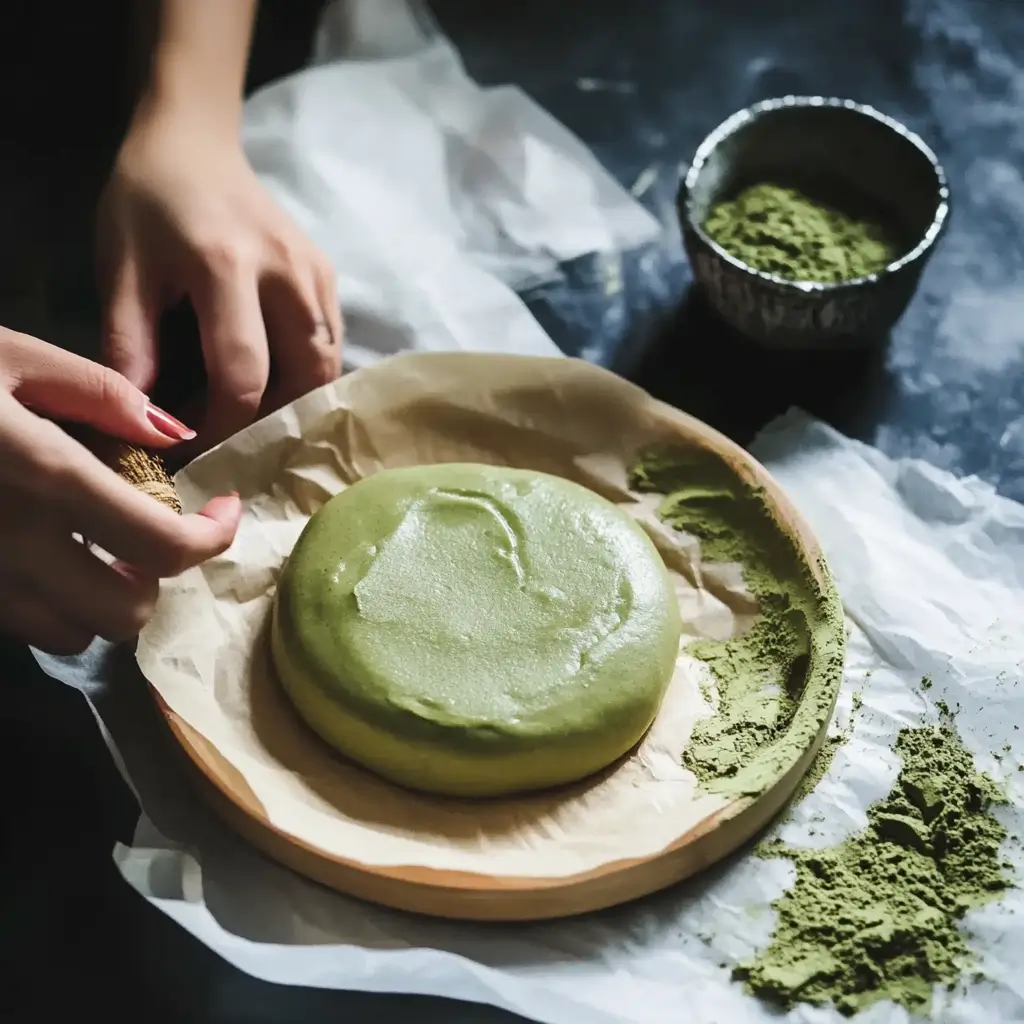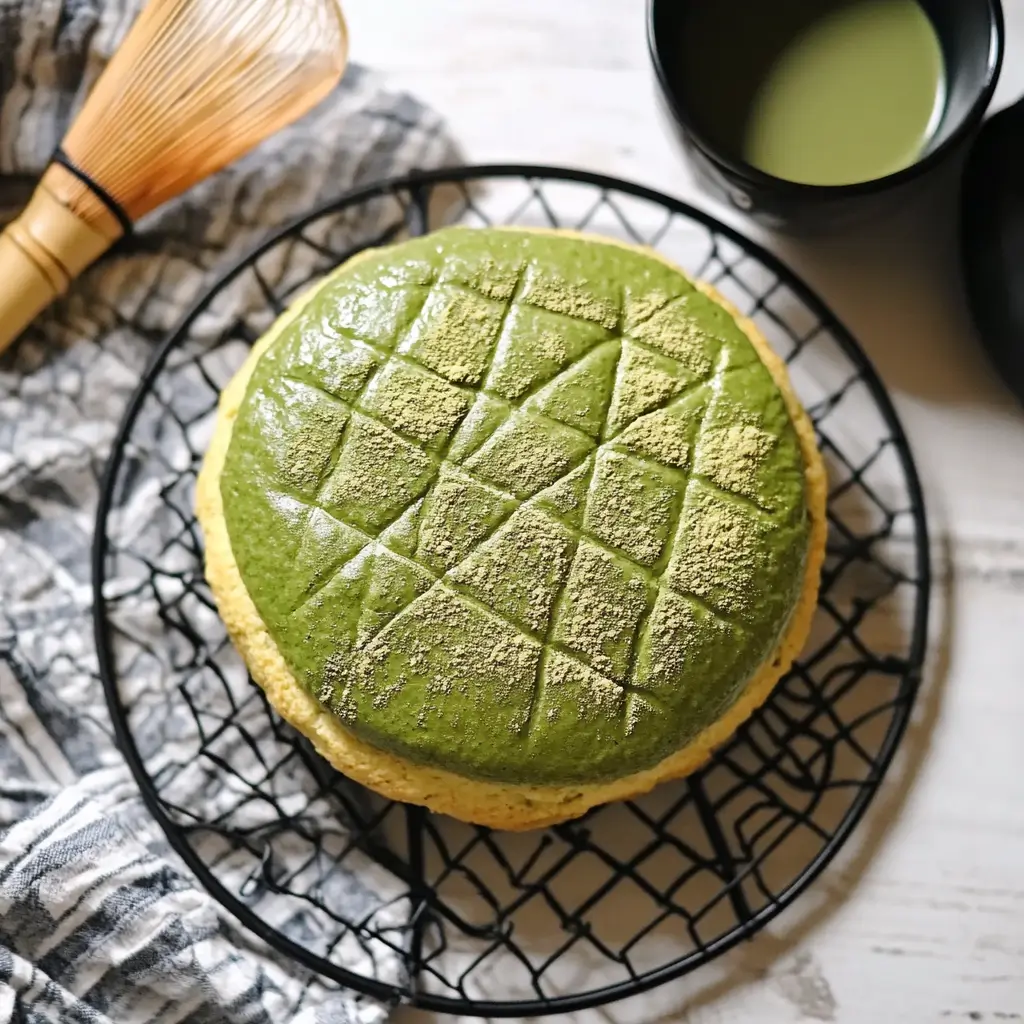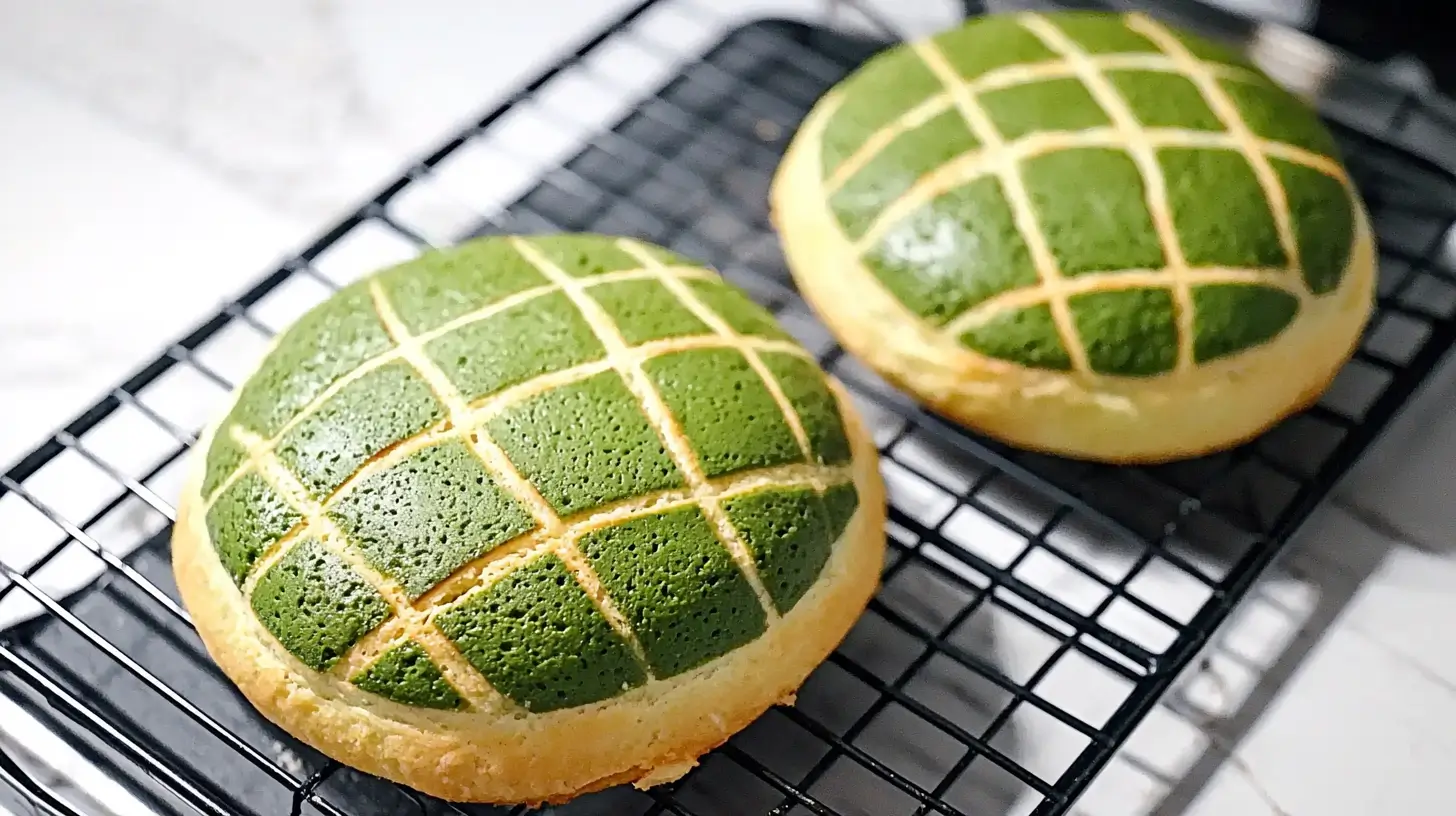Imagine biting into a soft, fluffy matcha pan. It feels warm and comforting. This Japanese matcha bread is loved worldwide for its unique taste and health perks. As you dive into matcha pan, you’ll learn about its history, cultural importance, and why it’s a great treat.
Matcha pan’s bright green color and strong scent come from high-quality matcha. You’ll find out about matcha grades, from baking to drinking. Whether you love matcha lattes or muffins, matcha pan is a tasty addition.
Key Takeaways
- Matcha pan is a delicious Japanese sweet bread with unique flavor and health benefits
- High-quality matcha is essential for making the perfect matcha pan
- Matcha pan can be made with different ingredients, such as matcha powder, bread flour, and milk
- The health benefits of matcha include high levels of antioxidants and nutrients
- Matcha pan is a versatile dessert option that can be enjoyed on its own or paired with other ingredients
- Matcha pan is a popular treat that has gained worldwide recognition for its delicious taste and numerous health benefits
- Matcha pan is a type of Japanese matcha bread that is perfect for anyone looking to try a new and exciting dessert
The Origins and Cultural Significance
Exploring matcha buns and green tea bread reveals a rich history and cultural importance. Matcha’s roots go back to the Tang Dynasty in China. It was a blend of Japanese green tea and fluffy bread. Today, matcha is a key ingredient in many baked goods, like matcha buns and green tea bread.
In the late 12th century, Zen Buddhist monk Eisai brought matcha to Japan. This marked a new chapter in Japanese food culture. The traditional Japanese tea ceremony, or “chanoyu” or “sado,” highlights matcha’s importance. It’s not just about drinking tea but also about the ceremony’s beauty and the bond between host and guests.

In Japan, matcha is a cornerstone of the country’s food culture. Its use in baking has grown in popularity. Matcha buns and green tea bread showcase the variety of treats made with matcha. Japanese matcha is known for its rich, creamy, and umami taste, making it ideal for baking.
Matcha’s cultural significance in Japan is evident in several ways:
- Its rich history and origins in Japan
- Its role in the traditional Japanese tea ceremony
- Its unique flavor profile and nutritional benefits
- Its increasing popularity in modern Japanese cuisine and baking
Why Matcha Is a Popular Flavor
Matcha has become a hit in the world of food and health. Its unique taste and health perks have won over many fans. In the U.S., matcha has become a staple in lattes, ice cream, and smoothies. You can find it in many cafes and restaurants, showing its wide appeal.
Matcha is loved for its high antioxidant levels. It has more caffeine than regular green tea but doesn’t make you feel jittery like coffee. This makes it perfect for a quick energy boost. Its health benefits are many, and it’s now a favorite in desserts and pastries.

To make matcha, use water at 175°F. You can add 6 ounces of hot water or steamed milk to enhance the taste. Making matcha green tea takes about 5 minutes, making it a quick and tasty drink. Whether you enjoy it in pastry or dessert, matcha’s unique taste and health benefits are undeniable.
Some benefits of matcha include:
- High antioxidant content
- Energy boost without the jitters
- Numerous health benefits
- Versatile and can be used in various products
Exploring matcha reveals its unique taste and health benefits. It’s a great choice for a healthy and tasty drink or dessert. With its rising popularity, it’s no surprise matcha desserts and pastries are now common in cafes and restaurants.
Key Ingredients for Making Matcha Pan
Making matcha pan requires the right ingredients. You’ll need high-quality matcha powder, flour, and sugar. These ingredients make a delicious Japanese sweet bread. We’ll look at the essential ingredients, including matcha powder types and the importance of quality flour.
First, choose a fresh, vibrant green matcha powder. There are ceremonial and culinary grades. Ceremonial matcha is for tea ceremonies, while culinary matcha is for baking. For matcha pan, use culinary grade.
You’ll also need flour, sugar, and other ingredients for the dough. The flour type affects the bread’s texture and flavor. Use a high-quality bread flour with good protein content. Sugar, yeast, and other ingredients are also needed.
Here are the key ingredients for matcha pan:
- 2 tablespoons of matcha powder
- 3 cups of bread flour
- 1/4 cup of sugar
- 1 teaspoon of salt
- 2 1/4 teaspoons of instant yeast
Using these ingredients and a traditional recipe, you can make a delicious matcha pan. It’s perfect for snacking or serving guests. Matcha pan’s unique flavor and soft texture make it a favorite.
Step-by-Step Guide to Making Matcha Melon Pan
To make matcha pan, start by preheating your oven to 320°F (160°C). While it heats up, prepare the dough. The baking time is about 12 to 15 minutes.
Let the dough rise for 60 to 90 minutes before shaping. Chill the cookie topping dough for 30 minutes. Then, let the shaped dough proof for 30 to 40 minutes. The recipe includes bread flour, cake flour, yeast, milk, egg, sugar, salt, and butter for the dough.
The cookie topping is made with cake flour, butter, sugar, matcha powder, egg, and optional vanilla extract. The matcha cookie crust makes Matcha Melon Pan special. It adds a vibrant green color and a unique flavor. Serve it warm with Japanese green tea or a matcha latte for a delightful treat.
Tips for Achieving the Perfect Texture
- Use a combination of bread flour and cake flour for the dough.
- Don’t overmix the dough to achieve a soft and fluffy interior.
- Chill the cookie topping dough before use to get a crispy cookie-like crust.
Follow these steps and tips to make delicious matcha pan at home. Enjoy it as a tasty treat.
The Health Benefits of Matcha in Baking
Baking with matcha is more than just making tasty treats like japanese matcha bread. It’s also adding a nutrient-rich ingredient to your diet. Matcha, a type of green tea, is packed with antioxidants and offers several health benefits.
Matcha can help reduce inflammation, improve heart health, and boost metabolism. It also helps improve insulin sensitivity and increase GABA levels, which can help with stress relief. So, whether you’re baking green tea bread or other matcha-based treats, you’re making a healthy choice.
Here are some of the key nutrients found in matcha:
- High amounts of protective polyphenols
- Significant levels of epigallocatechin gallate (EGCG)
- Concentrated source of caffeine, L-theanine, and polyphenols
Adding matcha to your baking can make your favorite treats even healthier. Its rich, slightly bitter taste complements many ingredients. From sweet breads like japanese matcha bread to savory green tea bread, matcha is a versatile ingredient. So, why not try it in your next baking project?
Essential Matcha Tools for Baking
To make tasty matcha pastry, you need the right tools and ingredients. High-quality matcha powder is key for matcha recipes. You’ll also need flour, sugar, and more to bake a matcha pastry.
A good matcha tool set has a bamboo whisk, scoop, tea bowl, and a sifter. These tools help with measuring, whisking, and serving matcha. For baking, you’ll also need a mixer, oven, and measuring cups and spoons.
Here are some essential tools and ingredients for baking matcha pan:
- Matcha powder
- Flour
- Sugar
- Bamboo whisk
- Bamboo scoop
- Tea bowl
- Mixer
- Oven
- Measuring cups and spoons
With these tools and ingredients, you can bake delicious matcha pastry. Enjoy the benefits of matcha recipes. Remember to pick high-quality matcha powder and take care of your matcha tools.
Why Gen Z Is Obsessed with Matcha Pan
Matcha has become very popular among Gen Z. Its unique flavor and cute appearance, like in matcha buns, are big reasons why. The bright green color and soft taste of matcha are found in many cafes and bakeries, especially among the young.
Social media has also played a big role. Instagram and TikTok are full of matcha desserts. Their beautiful looks and tasty flavors have made them super popular. You’ll see lots of matcha buns, lattes, and other treats being shared and loved.
Matcha is also seen as healthy. It’s packed with antioxidants and has health benefits. This makes it a great choice for those wanting a healthier dessert option. If you’re thinking about trying matcha desserts, learning about its benefits might interest you.
Here are some ways to enjoy matcha:
- Matcha buns: a sweet and delicious treat that combines the flavors of matcha and traditional bun ingredients
- Matcha lattes: a refreshing and energizing drink that combines matcha with milk and other ingredients
- Matcha desserts: a variety of sweet treats that incorporate matcha, such as cakes, cookies, and ice cream
Why Starbucks Matcha Tastes Different
Matcha baked goods, like green tea bread, can taste very different. Starbucks matcha stands out because of its unique flavor. So, what makes Starbucks matcha so special?
The type of matcha powder and how it’s brewed are key. Some matcha is delicate, while others are stronger. Starbucks uses a special matcha powder for their drinks. They also brew it in a way that enhances the flavor.
To make Starbucks-style matcha at home, use similar matcha powder and brewing methods. You can also play with the matcha to water ratio and add sugar or honey to taste. This way, you can make delicious matcha drinks at home, just like Starbucks.
When making matcha drinks at home, consider a few things:
- Use high-quality matcha powder
- Adjust the matcha to water ratio
- Try different brewing methods
- Add sugar or honey to taste
By keeping these tips in mind, you can create your own unique matcha flavor at home. Whether it’s for green tea bread or a matcha latte, you can make it special.
FAQs About Matcha Pan and Matcha in General
Exploring matcha pan and matcha pastry can raise many questions. You might wonder about its health benefits, ingredients, and uses. Here, we’ll answer common questions about matcha pan and matcha.
Many ask about the best water temperature for matcha. The ideal temperature is between 140-170 degrees Fahrenheit. This is lower than boiling point, which is 212 degrees Fahrenheit. Using the wrong temperature can make your matcha taste bitter instead of sweet.
Another question is about matcha powder’s shelf life. If stored in a fridge or freezer, matcha can last up to six months. However, it’s best used within 2-3 months after opening. Matcha is sensitive to oxidation, which can reduce its health benefits and make it taste bitter if not stored right.
- What is the recommended amount of matcha powder to use per cup? About 1 teaspoon (2 grams) of matcha powder with 8 oz of water is a common recommendation.
- Is matcha pan and matcha pastry healthy? Yes, matcha contains high levels of antioxidants, specifically catechins, which can be up to 137 times higher than that of regular green tea.
- How do I store matcha powder to maintain its quality? Store it in a fridge or freezer to extend its shelf life and prevent oxidation.
By answering these questions, you can understand matcha pan and matcha pastry better. This will help you enjoy its health benefits and uses.
Conclusion & Final Thoughts
Matcha pan has grown a lot since it started in Japan. It’s loved worldwide for its soft texture and unique matcha taste. With more people wanting to try it, matcha pan’s future looks bright.
We’ll see new matcha recipes and creative takes on this pastry. Bakeries and home cooks will keep trying new things. This will make matcha pan even more popular as people look for tasty, healthy treats.
If you love matcha or are just starting to explore Japanese baking, matcha pan is for you. Keep trying new things and enjoy the mix of sweet and savory. Let matcha take you to a peaceful, Japanese moment of joy.
FAQs
What is matcha pan?
Matcha pan is a tasty Japanese sweet bread. It mixes the special taste of matcha green tea with soft, fluffy bread.
What are the health benefits of matcha in baking?
Matcha is full of antioxidants and nutrients. Adding it to baked goods like matcha pan is healthy. It can lower inflammation and boost heart health.
How do I make matcha pan at home?
To make matcha pan, you need top-quality matcha powder, flour, and sugar. We’ll show you how to mix the dough, let it rise, and bake it to perfection.
What makes Starbucks matcha different?
Starbucks matcha tastes unique because of a secret ingredient. We’ll look into why their matcha tastes different and how to make it at home.
Why is matcha pan so popular with Gen Z?
Matcha pan is a hit on social media. Its beautiful look and yummy taste win over Gen Z. We’ll explore why it’s so popular with them.

